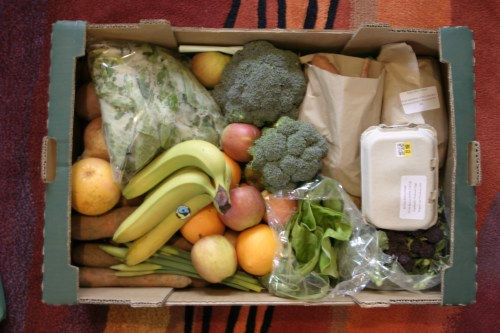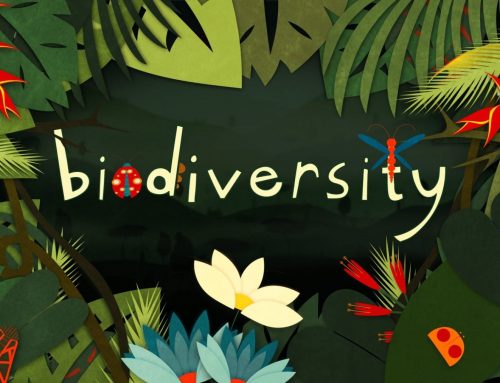We’ve spent a lot of time this month talking about the joys of gardening. Often, at Postconsumers.com, we’ve been known to focus on gardening and organics in the late spring and early summer. After all, it’s what’s on almost everybody’s mind. This year, we realized that we use the term organic fairly frequently, but we’ve never really made sure that people know exactly what organic means. And while it may seem as though it’s a term that everybody understands, you may be surprised not only in how the actual definition of organic is formulated but also in how it’s enforced in large-scale agriculture. Today, we’re breaking down what’s really organic about organic produce and farming.
What Does It Actually Mean When Produce is Labeled Organic?
When it comes to produce, or livestock for that matter, organic means that the food was grown in a specific way. To meet the majority of organic food labels, food must be grown in safe soil, must have no genetic modifications, must remain separate from “conventional” produce and must not be exposed to synthetic pesticides, petroleum based fertilizers and sewage-sludge-based fertilizers. For livestock, their feed must be qualified as organic and they must have access to the outdoors. They also may not be exposed to antibiotics, growth hormones or other animal-by-products.
After harvesting, organic produce must be processed without using irradiation, industrial solvents or chemical food additives.
But that doesn’t mean that your organic food was grown without any type of intervention. Most organic food is exposed to pesticide. It’s just that the pesticide used is organic itself (Bt toxin).
How Can You Tell if Your Food is Organic?
It would be ideal if you could simply know that your produce was organic because the hand-drawn sign above it happily proclaimed it as organic. However, in a world of greenwashing, we wouldn’t trust that. In fact, we wouldn’t even necessarily trust it at your local farmer’s market. As fabulous as farmer’s markets are, you never know when an organic scammer is going to show up. The best way to tell if your food is organic is to make sure it’s got one of the official, regulated organic labels (either on the food itself or provided by the vendor). The most common of these is the USDA Certified Organic label.
But one of the lesser known facts is that there are actually three different USDA Certified Organic labels. We think that some organic is always better than no organic, but if you really want to be passionate about your food and what’s in it, you need to know this often overlooked difference.
100% Organic: This label, somewhat obviously, means that your produce or livestock (or even prepared food) was created using entirely organic processes.
Organic: If your food is labeled only organic, there’s been some room for the introduction of nonorganic elements. The standard is still high and your food needs to qualify as having 95% total organic quality. This is the most common label (it’s hard to transport food without some preservation), but know that you’re still getting some elements of non-organic.
Made With Organic Ingredients: This is the tricky one that you need to watch out for! You’ll never see it on the front of the package (it’s illegal for these products to claim that they are organic on the front of their package) and the requirements are still fairly tight, but there are decidedly non-organic components to all of this food. The food must be at least 70% organic and it must be 100% GMO free. However, the other thirty percent is a fairly free game. Be sure to take the time to read ingredients on these products before you assume that they’re mostly organic!
How Are These Labels Monitored?
Here’s where the real cause for concern may be. For a producer or farmer to label their product as organic, they need to meet the following criteria:
– Must have an organic system plan
– Must have records that show compliance with that plan
Organic food producers are inspected annually, and in theory there are random checks throughout the year. We have our doubts in the current state of government deficit and funding cuts to the FDA. But of course the basic flaw in this system is that you are trusting profit-driven food producers to be honest and the FDA to be diligent.
In some cases, larger grocery chains like Whole Foods have picked up where the government may not have the resources to continue, using their own inspection methods to ensure the organic quality of the produce. While there’s a small part of us that cringes at sending anybody to Whole Paycheck, there is a level of quality there that you can count on.
Our best advice is always to shop as locally as possible. The more relationship you have with the people who produce your food, the more you can be confident that your food is meeting all true organic standards.
Did we miss a fact about organic labels that you really, really feel that we should have shared? Tell us about it on the social media channels below.
Facebook | Twitter | Instagram | Tumblr | Pinterest | Google+
Related Information
Best Medicinal Plants for Your Bathroom
Best Plants to Give as Holiday Gifts
Photo Credit: verseguru via Flickr





